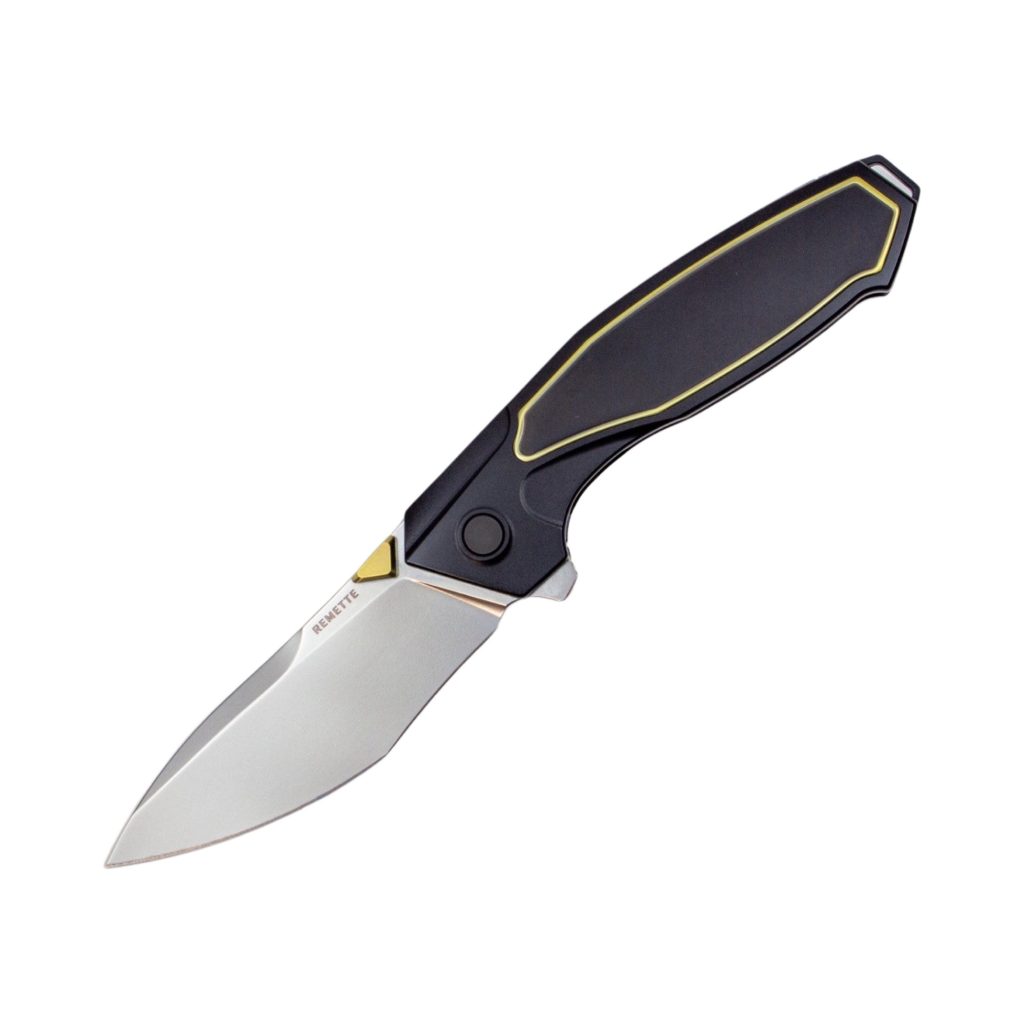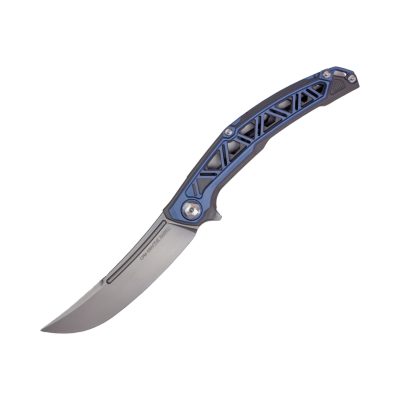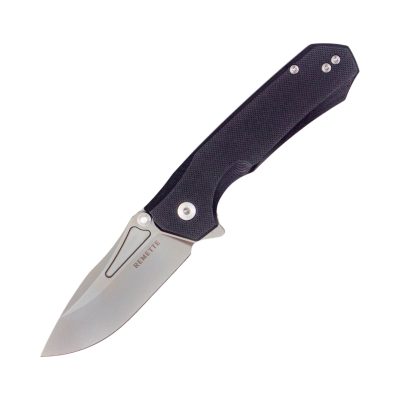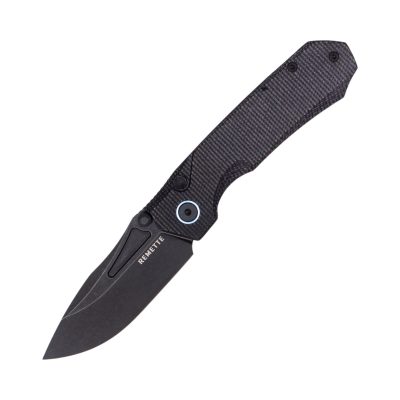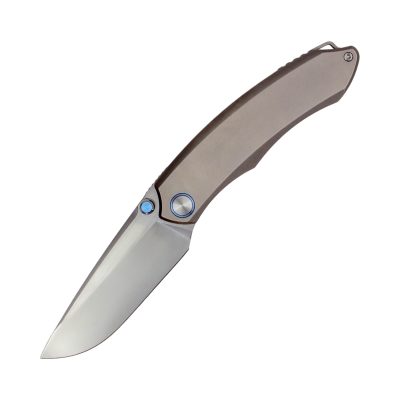If you aren’t much into electronic entertainment, you might not know that a spate of survival-focused video games have hit the market in recent years, everything from child-focused hits like Minecraft and Grounded to grittier offerings such as The Forest and Green Hell. Though these titles vary wildly in tone, they have one thing in common: Players tend to start with little but their bare hands and must create crude, common tools that will gradually grow in complexity over time. These games mirror the advancement of human civilization, in a way, slowly advancing from wooden and stone tools to those of crafted from copper and iron.
Such progression is pretty predictable when playing a video game — and much less so when considering the evolution of actual real-world implements. Life is far more complicated than any collection of pixels on a screen. For instance, consider the folding knife, a seemingly simple sort of blade that advanced in unexpected ways over the course of human history. In this article, we’ll talk about the ways in which the folding knife evolved over millennia.
Humble Beginnings: The Jacknife and Friction Folder
No discussion of the ways in which folding knives changed after time can be considered complete without discussion of the Hallstatt knife. Discovered in Austria and created by a precursor of Celtic civilization sometime around 600 B.C., it featured a startlingly simple design. Today, we would call it a jacknife, but even giving it a name beyond that of a folder seems a little like trying to make a purse out of a sow’s ear. The Hallstatt knife consisted of nothing more than a blade, a bone handle containing a divot into which the blade would fold, and a pin-secured pivot point. It’s worth noting that the Hallstatt knife is not only the first folding knife we’ve found, it’s also the first Iron Age folder. Others certainly existed, perhaps even back into the Bronze Age, and it’s not too much of a mental leap to suppose that they shared the same design.
It took about 500 years for the next major change in folding-knife design to happen, and that innovation owed to the efforts of the Romans. Not only did they not restrict themselves to working solely with iron, choosing to employ bronze, copper, and other additional metals, they came up with a way to reliably keep their knives open. The Roman response to the unsecured blade of the jacknife was the friction folder. This simple evolution simultaneously introduced a longer tang on the blade that extended past the pivot point and a corresponding slit on the handle’s spine. By fully opening the knife and slipping a thumb over the tang, its owner could easily keep the knife open during use by applying pressure. The friction folder would also independently appear several centuries later in Scandinavian cultures, and inexpensive and luxury examples still exist today.
Somewhat surprisingly, much more complex examples of Italian knifemaking ingenuity have been exhumed by archeologists. The most shocking of these is a utility knife that bears a resemblance to today’s Swiss Army knife. This example boasted eating implements and a spike (possibly used to clean teeth) that could be folded up into the knife’s handle.
Accelerating Innovations: The Spring-Assisted Pocketknife and Swiss Army Knife
It’s possible that numerous knife innovations occurred after the collapse of the Roman Empire, but if they exist, we have no record of them, no concrete examples toward which we can point. As far as the archeological record is concerned, the next major step in folding-knife evolution wouldn’t occur until the 17th century in both Europe and Britain. Part of the reason for the leap owes to the influence of governmental regulation, which coincided with the introduction of better manufacturing materials.
Jump forward not only in time, but also geographically from ancient Italy to the Iberian Peninsula where the 1600s saw the restriction of sword ownership to only the hidalguía (i.e., nobility) of Spain. A kind of large folding knife known as a navaja. Originally used by various laborers and scribes in their everyday tasks, the introduction of high-quality steel, a spine-mounted spring, and a locking mechanism made the navaja a viable option for self-defense (when it came to commoners) or offense (when employed by thieves). This makes the navaja possibly the first spring-assisted pocketknife.
Over in England, a knife known as a slipjoint started to appear. It shared several characteristics with the navaja. It folded. It contained a spring. It proved popular with working folk and robbers alike. But it differed in that it had no mechanical locking mechanism that kept the blade firmly fixed in the open position. Instead, its back spring held the blade either opened or closed, and to change the blade’s position, one only had to exert enough force to overcome spring’s tension.
Faster and more secure opening seemed to be the proverbial name of the game throughout Europe during this period. Contrary to popular opinion, Italians didn’t invent the switchblade, although they would go on to popularize it. The switchblade style of out-the-side automatic knife would evolve from spring-powered, collapsing bayonets that could be quickly opened just prior to combat. It wouldn’t be until the 19th century that the concept shifted to knives, and Italy would craft the instantly recognizable slim and stylish switchblade stiletto.
Meanwhile, just a little to the north, Switzerland took a more practical–and backward looking–approach to knife innovation. We’ll never know if Swiss innovator Karl Elsener drew inspiration from that ancient Roman utensil we mentioned in the prior section, but what he ended up creating closely resembled it. Inspired to create jobs for local workers and recognizing the Swiss military’s need for a practical, multi-function tool, Elsner designed a folding knife with a blade, a hole punch, a screwdriver, and (eventually) a corkscrew. The Swiss Soldier knife would become known as the Swiss Army knife, and it remains incredibly popular.
Stable and Swift: Locking Blade Knives and OTFs
The last 250 years of folding knife evolution have seen a proliferation of creative designs, many of which are iterations of the locking blade knife. Different kinds of locks yielded various different results when it came to stability and ease of opening. Innovations included the …
- Liner Lock: a bent metal lining inside of the folding knife’s handle slides into a corresponding notch on the pivot of the blade when it’s fully open; users manually slide the lining to the side when they want to close the knife.
- Frame Lock: works identically to the liner lock, only a cutout section of the frame takes the liner’s place.
- Ring Lock / Collar Lock: a late 19th century Swiss invention featuring a slotted, swiveling sleeve of metal at the head of the handle that prevents the knife from closing once it is rotated.
- Back Lock: an incredibly popular modern lock where a slat of metal attached to a pivot point drops into a divot on the bottom of the blade; a connected notch near the butt of the handle allows users to lift it.
- Button Locks / Plunge Locks: a lock type used on both spring-assisted and manually opening knives, button locks feature a plunger-like internal mechanism that holds the knife closed; pressing the button moves the plunger, allowing the knife to open.
Due to certain mid-20th century regulations that practically outlawed switchblade-style knives, knife makers sought other ways to help users open their knives as quickly as possible. The tactical knife employed high-performance materials such as carbon fiber and added notches, thumb holes, or studs near the spine of the blade, letting wielders open them with a single motion. While an advancement, tactical knives required a fair bit of dexterity to use reliably.
With the relaxation of Federal legislation restricting the sale of spring-assisted knives, the out the front (OTF) knife had room to shine. Similar to a switchblade, OTFs allow users to instantly open an automatic knife by flicking a lever. But instead of opening out the side like those Italian stilettos, OTFs fire straight out of the handle. What’s more, you can instantly retract it by tugging the lever in the opposite direction. This small change has transformed the once clunky pocketknife into an implement ideal for self-defense as well as utility. Appropriate for first responders, those with limited mobility, and enthusiasts alike, OTFs represent a true step forward for knives.
We specialize in offering high-quality OTFs at affordable prices. You can find our full selection here.
Browse Our Folding Pocket Knives
-
Rated 5.00 out of 5$129.95 – $169.96Price range: $129.95 through $169.96Select options This product has multiple variants. The options may be chosen on the product page
-
Rated 5.00 out of 5Select options This product has multiple variants. The options may be chosen on the product page
$59.95Original price was: $59.95.$23.95Current price is: $23.95. -
Rated 5.00 out of 5Select options This product has multiple variants. The options may be chosen on the product page
$65.95Original price was: $65.95.$24.95Current price is: $24.95.

